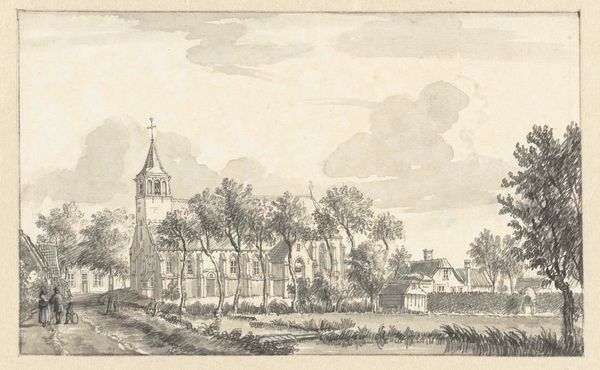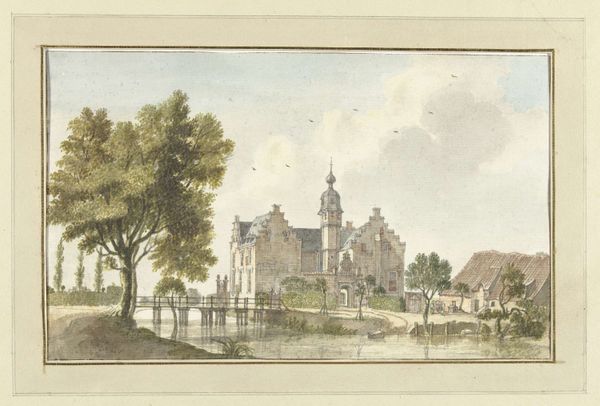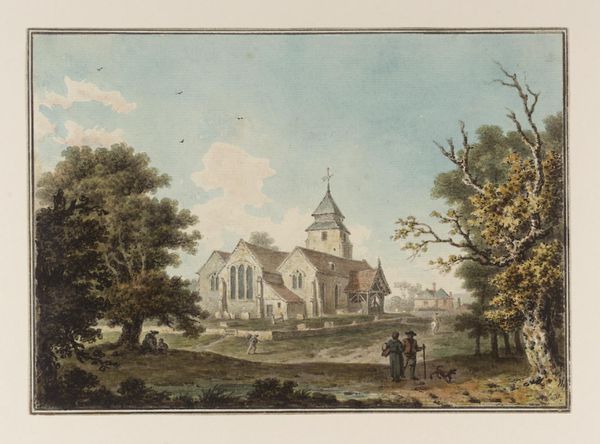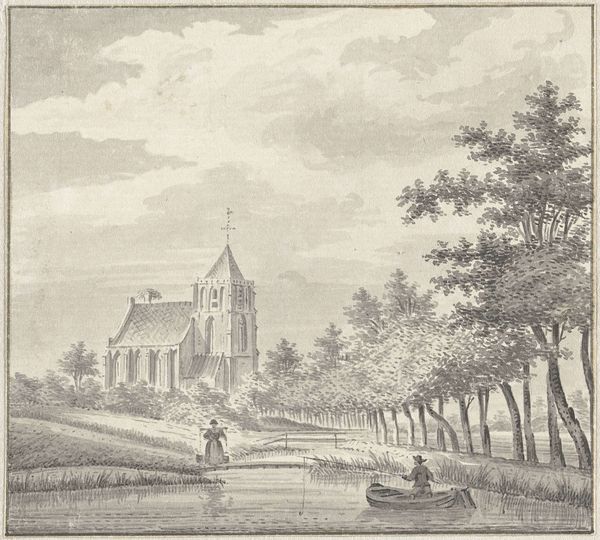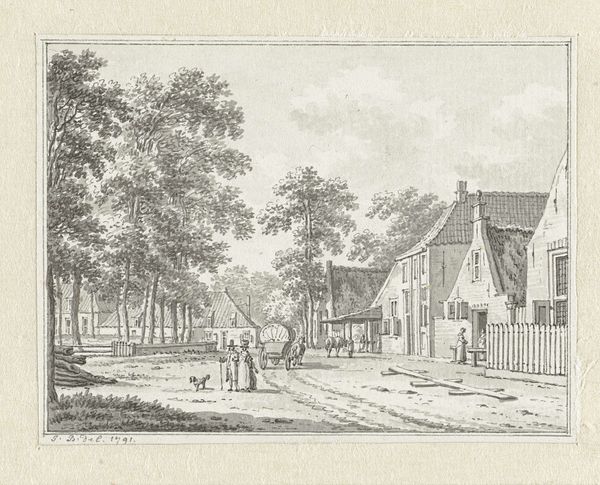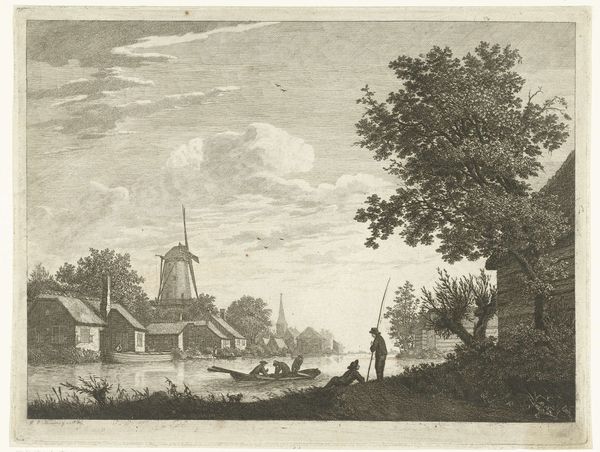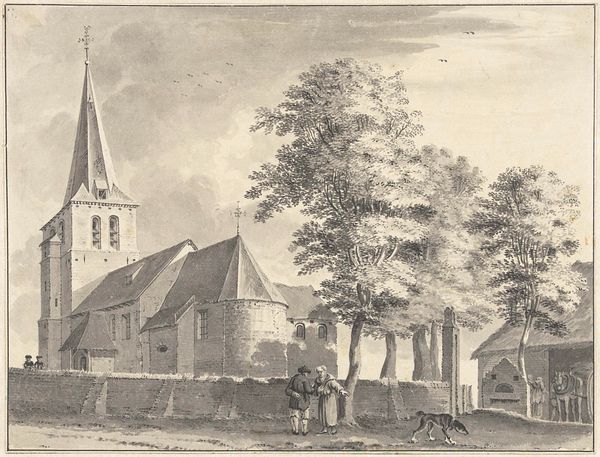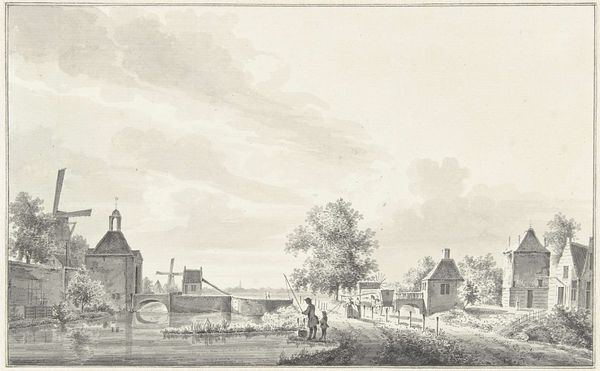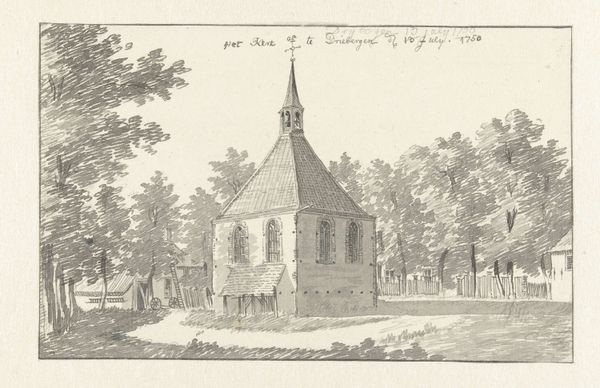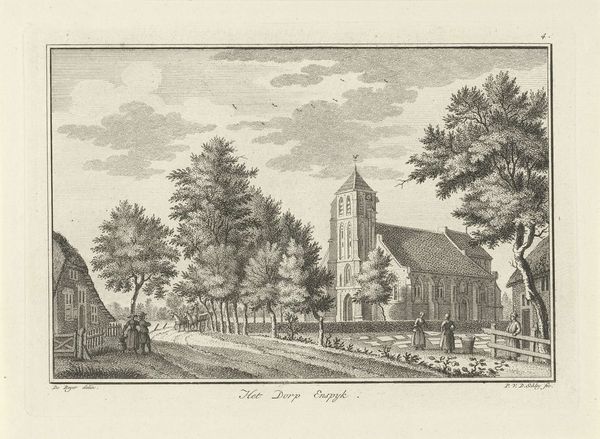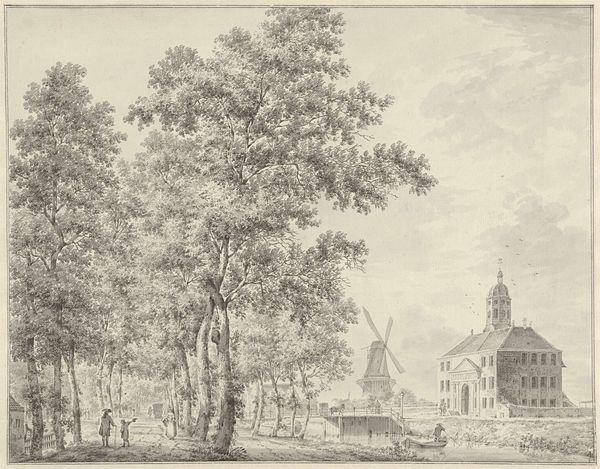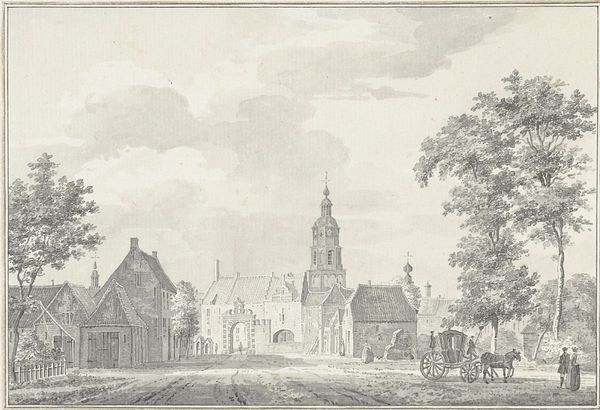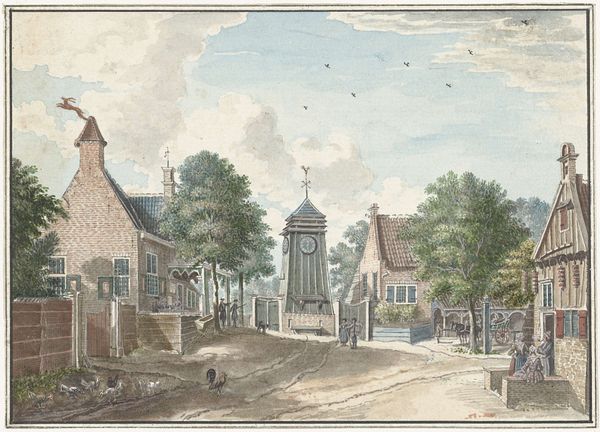
drawing, tempera, plein-air, watercolor
#
drawing
#
tempera
#
dutch-golden-age
#
plein-air
#
landscape
#
watercolor
#
coloured pencil
#
cityscape
#
genre-painting
#
mixed medium
#
mixed media
#
watercolor
Dimensions: height 124 mm, width 205 mm
Copyright: Rijks Museum: Open Domain
Editor: This is Cornelis Pronk's "Het dorp Hoogmade," dating from between 1730 and 1740, created using drawing, tempera, and watercolor. I'm struck by how the muted colors create a placid atmosphere. What do you see in this piece? Curator: The compositional structure is quite deliberate, is it not? Observe how the horizontal line of the water’s edge bisects the picture plane, establishing a clear foreground and background. The buildings and trees serve as vertical elements, creating a balanced yet rhythmic interplay. Pronk has carefully articulated the surfaces using tempera and watercolor. Consider, for instance, the textures rendered in the thatched roof of the farmhouse, as compared to the smoother surfaces of the church. Do you see how he employs varied techniques to differentiate form? Editor: I see it now – there's a definite contrast. So, beyond technique, what's the effect of that structure? Curator: Structurally, it creates a harmonious, balanced whole. Note that the muted color palette, comprised of earth tones and gentle blues, reinforces this tranquility. There's a dialogue between flatness and depth. Observe how he juxtaposes detailed renderings of the architectural elements with the hazy, atmospheric rendering of the sky and distant trees, which serves to enhance the three-dimensionality, wouldn’t you agree? Editor: That's a great point. I hadn't fully appreciated the balance between detail and atmospheric perspective before. Curator: Indeed. These elements—line, color, form, and composition—work in concert to evoke a feeling of serene order and structural clarity. Ultimately, the piece offers a structured meditation on form. Editor: This perspective really brings to light how formal analysis unlocks the image's intricate structure! Curator: Precisely! Now you can better understand that art interpretation necessitates a careful awareness of all visual components, in order to understand the entirety of their arrangement, creating deeper observation.
Comments
No comments
Be the first to comment and join the conversation on the ultimate creative platform.
